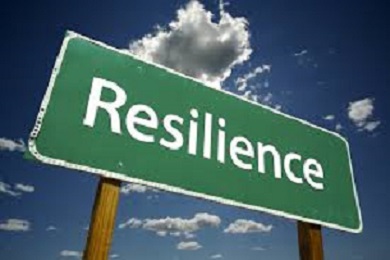Learn to Increase Resiliency in PTSD Recovery
Learning to increase my resiliency when dealing with posttraumatic stress disorder (PTSD) symptoms and everyday stress has been essential in my PTSD recovery. While I thought that resiliency was something that would just naturally follow working an active wellness treatment plan, I have found that resiliency is actually something that can be built and strengthened during recovery, and it can be done by learning to be proactive in a few simple areas when triggered or stressed. As I have increased my resiliency, my PTSD symptoms have lessened and my stress and anxiety have decreased, making everyday life much more enjoyable.
What Is Resiliency?
Resiliency is defined as the ability to become strong, healthy, or successful again after something bad happens. I define it for myself as the ability to adapt and adjust, returning to one's true self after suffering trauma, grief, stress, or anxiety. When I suffer some kind
of setback in my recovery (being triggered, feeling anxious or depressed), it is my resilience that helps me to "bounce back" to my normal self.
Resiliency isn't something inherent in us, it is something that is developed through our life experiences, self-awareness, and our level of optimism. It is possible to increase resiliency in PTSD recovery, despite having suffered trauma and being affected by PTSD symptoms. Resiliency can be learned through adapting our thoughts, behaviors, and actions in some simple (yet, not always easy) ways.
How I Increased Resiliency in My PTSD Recovery
These are some of the things that I have found to work in learning to improve my resiliency to stressors in recovery:
- Being flexible--One of my triggers is dealing with change, which I think stems from the unpredictability I experienced in the abusive relationships I had in the past. So for me, actively maintaining an attitude of flexibility and acceptance when things change is key to bouncing back.
- Being optimistic--Although there are certainly times when I am a glass-half-empty kind of person, I find that when I adopt a more optimistic perspective I am more resilient to anxiety. Often it is just the belief that I won't always feel anxious or stressed that helps me get through it faster.
- Being faithful--My faith is a huge part of my recovery process. Prayer keeps me centered so that when I do feel stress, anxiety, or depression, I am able to see the big picture, which is much more helpful than focusing on whatever my current challenge is.
- Being communicative--My first inclination when confronted with obstacles in my recovery is to shut down and isolate, but I know that in order to rebound, I have to talk about what is bothering me. I have a support system that I can count on to listen to me and offer advice when I need it.
- Being active--For some, being active may mean exercise or other physical activity. I am not great about physical fitness, but if I just make a decision to continue to do my daily activities and not mope, lay around, and be lazy, I find that I am able to recover from negative things more quickly.
- Being self-aware--When I am stressed or anxious, I try to be aware of what I need physically, emotionally, and spiritually. Sometimes, it's as simple as recognizing that I need to nap, eat, pray, or write. This is especially true when I am stressed or anxious and I don't really know why. If I take a few moments and do a self-check on what I am feeling, take action or make an adjustment, then my resiliency kicks in.
You Can Learn How to Increase Resiliency in PTSD Recovery
If you are not as resilient when challenges come up in your recovery, take heart--resiliency can be developed as you figure out what works for you. As with all things in recovery, what works for one person may not work for another; what's important is to try different things to see what works for you. Then, do those things even when you're not stressed or anxious so that they become second nature, making it easier to practice those behaviors when you are challenged.
Find Jami on Facebook, on Twitter, on Google+, and on her blog, Sober Grace.
APA Reference
DeLoe, J.
(2016, May 19). Learn to Increase Resiliency in PTSD Recovery, HealthyPlace. Retrieved
on 2025, November 6 from https://www.healthyplace.com/blogs/traumaptsdblog/2016/05/learn-to-increase-resiliency-in-ptsd-recovery

